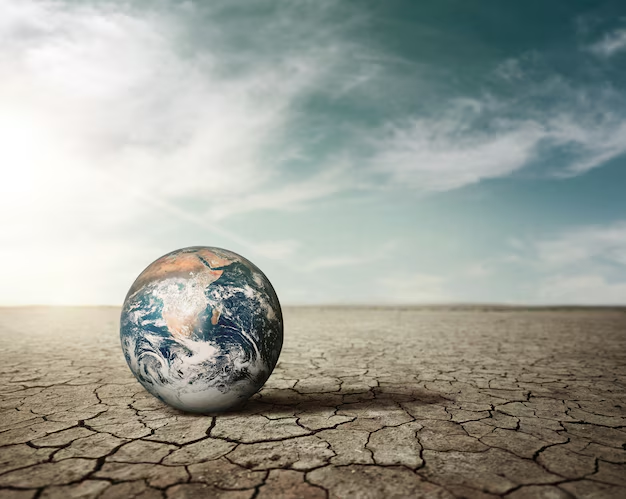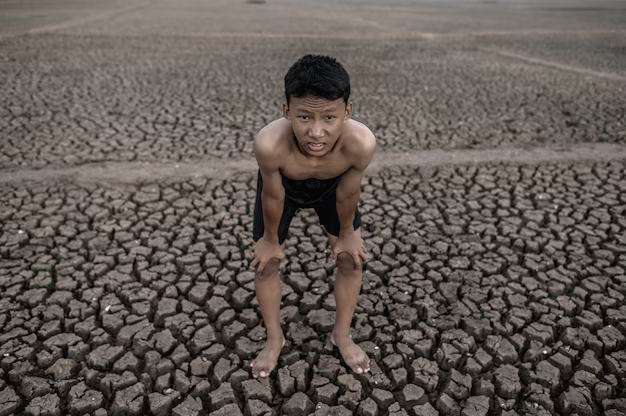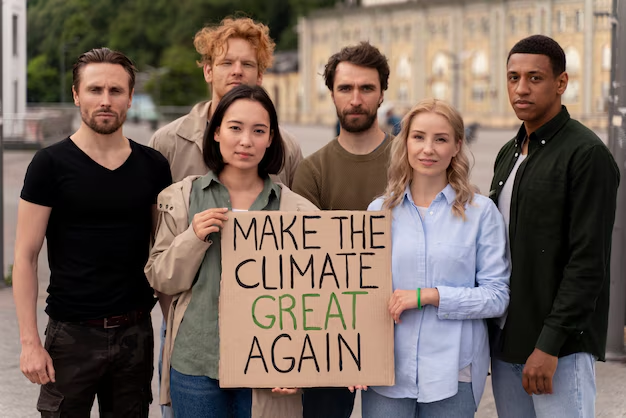Introduction
Sadly, climate change is one of the biggest challenges facing the world today. It relates to alterations in temperature and climatic conditions, which are permanent. Most of these changes have been realized to have been triggered by human activities most especially after the Industrial Revolution. Over the last few decades global mean temperatures have risen by roughly 1.2 degrees Celsius above pre-industrial levels – the IPCC limit. Since the end of World War II, there have been numerous measures instituted internationally to address this problem. Whether it is short-term or long-term, if such a trend persists, the consequences may be disastrous.

What is Climate Change?
Climate change is a time-scale shift in the earth’s climate pattern preferring, but not limited to, an upward shift in temperature. It is different from climate change, which only deals with temperature increases at the surface of the Earth. Climate change is not only global warming but other consequences that affect the planet, including shifting weather conditions such as rainfall and increased occurrence of natural disasters.
It includes natural causes which include volcanic activity and solar-borne radiation among others but the most prevalent today is the human-induced trigger. Industrialization of the world economy increased Greenhouse gases such as Carbon dioxide (CO2) and Methane (CH4) right from the 19th century onwards.

Causes of Climate Change
The rise in global temperatures is largely due to several human-driven factors:
Greenhouse Gases: Combined with our energy, transportation, and industrial needs fossil fuels release CO2, a heat-trapping gas. According to the Global Carbon Project in the year 2020, the concentration of CO2 has risen to 419ppm, the highest it has ever been in 800,000 years.
Deforestation: Plant economy is that forests and other wooded formations are capable of absorbing carbon dioxide. But according to the Food and Agriculture Organization (FAO), about 10 million hectares of forest area disappear annually. It results in increased CO2 concentration in the atmosphere and fertility and turn causes the rate of climate change.
Industrialization: Firms and industries, the transport sector, and energy industries emit GHGs; these sources provide more than 60 percent of emissions. The manufacture of cement accounts for 8% of greenhouse emissions globally as we seek to reach greener standards we devise instruments to negotiate with ourselves to reduce emissions.
Agriculture: FAO estimates that the livestock industry is responsible for 7% of all anthropogenic emissions of greenhouse gases, 14.5% if considered on the scale. These arise from cattle and rice paddies contribute widely to global warming.
Effects of Climate Change
The impacts of climate change are already visible and widespread:
Rising Temperatures: Climate change has also already taken place with global average surface temperature increased by 0.9 °C during the past hundred years. This has contributed to the frequent and severe heatwaves being experienced currently.
Melting Ice Caps and Rising Sea Levels: They found that polar ice is melting at a rate of 13% in a decade which is raising sea levels that threaten our coastal areas. According to the NOAA, the level of global sea-level increase could rise to 2.3 meters by the end of the century, should the present rates of global warming remain constant.
Extreme Weather Events: Tropical storms, forest fires, and rising waters have become the new normal. Data from the Internal Displacement Monitoring Centre indicate that 30.7 million people were displaced by climate change-related disasters in 2020 only.
Impact on Wildlife: A World Wildlife Fund report indicates that 67 % of global wildlife populations have declined because of habitat destruction as influenced by climate change in the last fifty years.
Human Health: Greenhouses lead to the worsening of respiratory-related diseases through poor-quality air while high temperatures through heat heat-related diseases. The WHO estimates that between the years 2030 and 2050, climate change will kill an extra 250000 people each year.
The Science Behind Climate Change
Climate change science has a sound relationship with facts within the scientific community. Samples of the ice appendix from the Antarctic show that today’s level of CO2 is significantly above everything observed in the last 800 millennia. Satellites record the temperature of the land mass, and research shows that human activities on Earth cause global warming. Statistics indicate that 97 percent of climatologists agree with this statement.
These six areas make carbon a critical component in maintaining the balance of Earth’s climate system: When humans use fossil energy sources, they release carbon that was underground for millions of years back into the atmosphere, adding to the Greenhouse effect.
Steps Taken to Counter Climate Change (Since 1945)
According to historical facts, after World War II a new organization of international cooperation was created, in which environmental questions were considered as well. They said this laid the groundwork for later climate agreements.
1972 – Stockholm Conference: The meeting between the United Nations under the first United Nations Conference on the Human Environment took place in Stockholm. This conference was the first forum that initiated the discussion of the ecological problems of the world suggesting that environment protection is crucial.
1987 – Montreal Protocol: The Montreal Protocol, an extremely successful environmental treaty, aims at the elimination of substances that deplete the ozone layer.
1992 – Rio Earth Summit: The UNFCCC was adopted during the Rio Earth Summit of 1992 as the international response to the problem of climate change. It was the world’s first international treaty to include provisions for the management of climate change. Later, it provided the context for subsequent treaties such as the Kyoto Protocol and the Paris Agreement.
1997 – Kyoto Protocol: The Kyoto Protocol of enlightening GHG emissions was the first treaty of its type and legally enforceable. The developed countries agreed to continue to reduce their emissions by 5.2% against the 1990 level.
2015 – Paris Agreement: The Paris Agreement is an international climate agreement ratified by 195 countries to prevent global warming from exceeding 1.5 pre-industrial levels. The countries made commitments to obtain the emission reductions and put national climate policies.
2021 – COP26 Summit: Last November at the COP26 in Glasgow, countries restated their commitment to the Paris Agreement. The latest summit demonstrated that it is necessary to strive for net-zero emissions by 2050, and underlined the importance of focusing on the further reductions of climate change.
Mitigation and Adaptation
The good news is that solutions exist!!!
Renewable Energy: Switching to such sources of energy as solar or wind power may cut emissions at their root. IRENA as a result projected that renewals have the potential of reducing CO2 emissions by up to 70 % by 2050.
Afforestation and Reforestation: Raising trees can solve ¼ of the CO2 emission problems across the world annually, and that’s why planting strategies are important for climate change solutions.
Energy Efficiency: Energy efficiency measures can help reduce energy demand by as much as 40%, a study determined based on the IEA data.
Sustainable Agriculture: They include crop rotation, where farmers rotate crops with a high C: N ratio with those having a low C: N ratio, and organic farming, where farmers avoid burying animal waste, leading to decreased methane emissions and improved soil health. As little as approaching farming differently can reduce agricultural emissions by only 25 to 30%.
Individual Actions: People can do their part by turning off lights when leaving a room, conserving electricity and water, and buying green products. A change as simple as using energy-efficient appliances will, when summed up, cut CO2 emissions by billions of tons.
Role of Governments and International Organizations
Governments and organizations play a pivotal role in addressing climate change:
Paris Agreement: On December 31, 195 countries ratified the Paris Agreement to limit world temperature rise to 1.5°C above pre-industrial levels. Annex 1 nations must plan for climate action and also cut their emissions.
National Policies: Denmark and Sweden have asked for net-zero emission targets by 2050, but China has set the target for carbon neutrality by 2060.
Corporate Responsibility: There are more and more companies that signed the net zero, such as Google and Apple have the goal of powering 100% through renewable energy by 2030.
Future of Climate Change
If international efforts are not made, experts expect the global temperature to increase by 4 percent by 2100, leading to severe consequences. However, there is hope today in climate tech; names like carbon capture and geoengineering. Direct air capture techniques could sequester up to 1 billion metric tons of CO2 from the atmosphere every year, according to the International Energy Agency.

We see global cooperation as significant at the same time. These aspects include technology transfer, financial assistance for developing nations, and deeper emission reduction objectives among others.
Conclusion
Therefore, climate change is an emerging and current problem, which, however, is solvable. Climate change can only be reduced by adopting renewable energy, increasing efficiency in energy usage, and acknowledging the part that we play. They also need to contribute to this global effort: Governments and corporations.
The future of the planet depends on the choices we make today. The time to act is now.
Read about our latest articles






